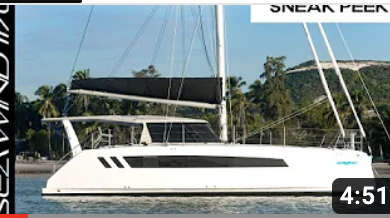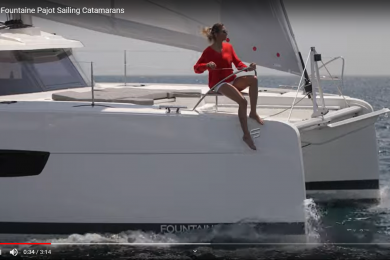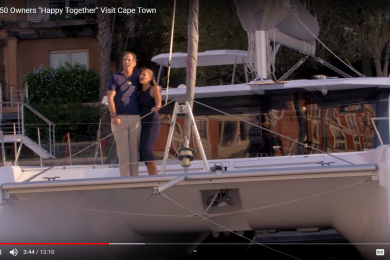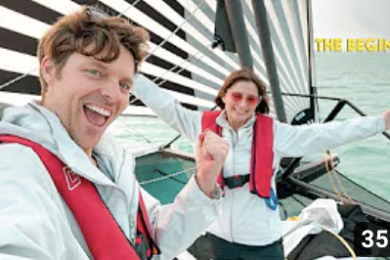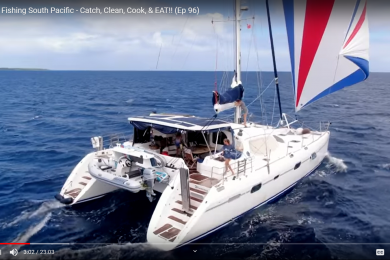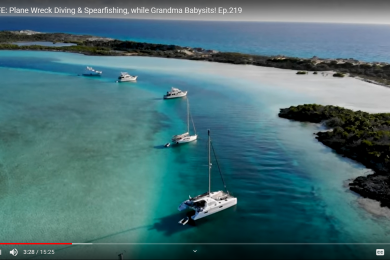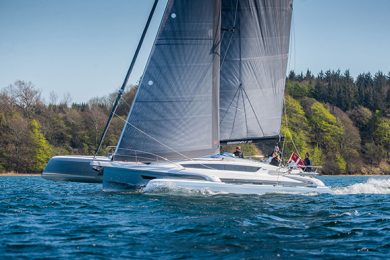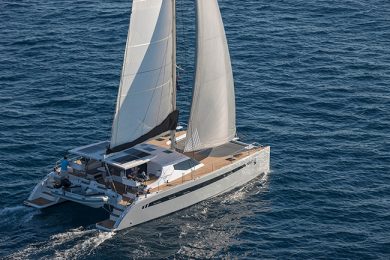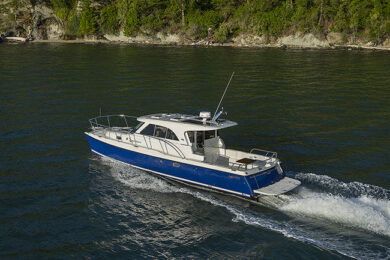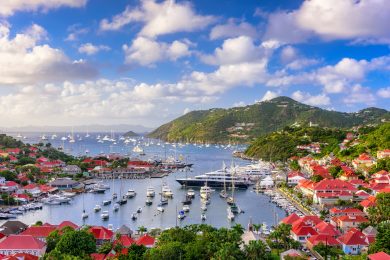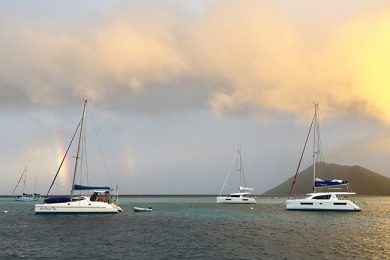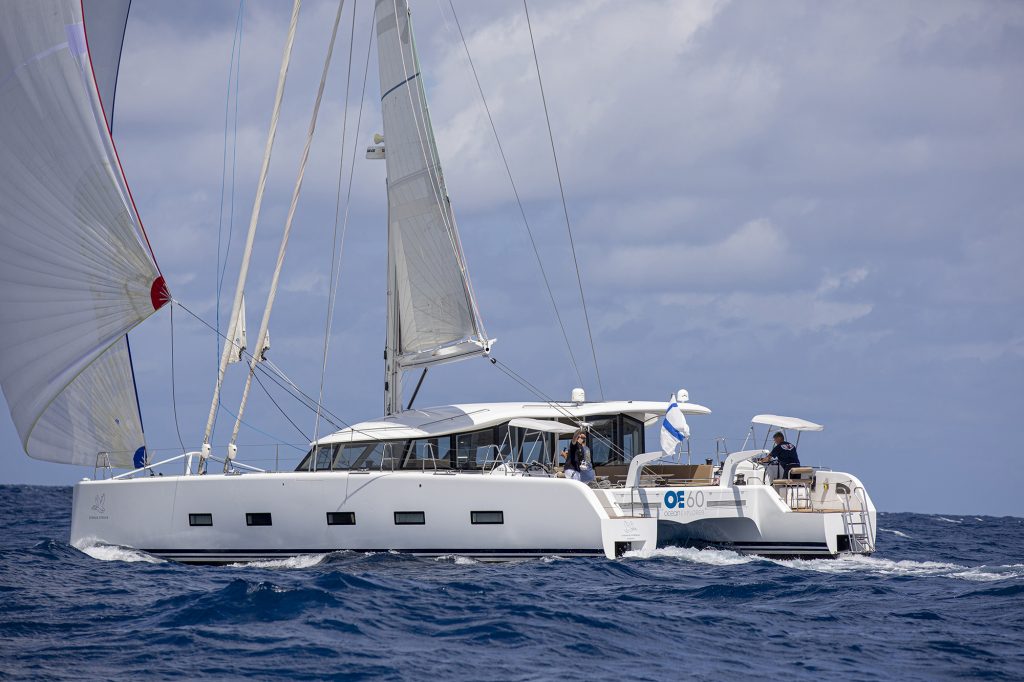When the first Ocean Explorer 60, Like a Breeze, was launched in Finland in 2013, the owners set out right away to do exactly what the big cat was designed and built for: Explore the world’s oceans. After sea trials, the new owners sailed the boat south to join the 2013 Atlantic Rally for Cruisers fleet in the Canary Islands. From there, they took their brand-new boat—hull number one—across the Atlantic Ocean. That the 3,000-mile crossing was a success and Like a Breeze made landfall with almost no gear or equipment failures is a loud testament to the quality and craftsmanship that the Finnish builders put into their work.
Ocean Quality Systems
The OE 60 and its subsequent sister ships, and the new OE72, are built by a company called Ocean Quality Systems (OQS), which is based in Jacobstad on the west coast of Finland. As most sailors know, Finland has long been one of Europe’s leading builders of high quality sailing yachts. It is home to Nautor’s Swan and Baltic Yachts. Plus, the country has numerous smaller builders who serve the Scandinavian and Northern European markets for cruising and racing sailboats.
OQS was founded by four marine companies that each has a long track record of excellence and innovation in their fields. Riskas Snickeri, which was founded in 1980, builds fine interiors and joinery for yachts and mega yachts of all sizes. Polypoint has been in the marine engineering business for more than 20 years and is renown for its expertise with all sea-going systems from energy charging and distribution to onboard plumbing, water-making and waste-water management.
Acu-Electro has been installing, maintaining and repairing all types of marine electronics on yachts for 30 years and has earned a reputation for reliability and excellence. Lastly, WiBo is a metal fabrication shop that has been designing and building stainless steel, titanium, aluminum and even iron gear and equipment for yachts, super yachts and ships for the past 40 years.
This group of companies joined together to create OQS with the aim to build cruising catamarans capable of sailing the world’s oceans in comfort, safety and style. Their vision from the beginning was to deliver quality second to none, in the Nautor’s Swan and Baltic tradition, and to provide on-board systems that are reliable, safe and easy for an amateur crew to handle. The company’s name, Ocean Quality Systems, says it all.
OE60: Design & Rig
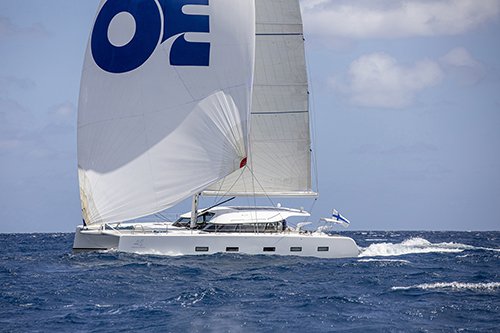
OQS worked with yacht designer German Frers for the OE60 with the brief to come up with a fast, elegant, comfortable cruising cat that would be appropriate for a family who wanted to explore the world together. The boat needed to be thoroughly modern and have better than average sailing qualities without being ultralight or liable to fly a hull. Hull number one was going to be a passagemaker capable of sailing around the world.
The design Frers came up with incorporates all of the items in the brief and more. With a slightly reverse curve to the sheer lines, the reverse stems at the bows and the angled transoms, the yacht looks purposeful and sleek. The saloon and coach roof sit quite low above the hulls and add to the elegance and sleekness of the design.
The cabin top is sculpted into a curved shape that evokes wings in flight. The wrap-around windows in the saloon, eight deck hatches and the five square side windows in each hull allow a lot of natural light into the interior spaces and aesthetically break up the look of the side panels of the hulls.
The 60’s hulls are narrow which means the boat will get up to speed quickly and will perform well in light and moderate breezes. With curved dagger boards inside each hull will give the 60 better upwind performance and will also be steadier and more comfortable in lumpy seas as the dagger boards, when part way down, dampen the hull’s motions. With retracting rudders and the dagger boards, the 60 can explore coves and anchorages off limits to boats with deeper drafts.
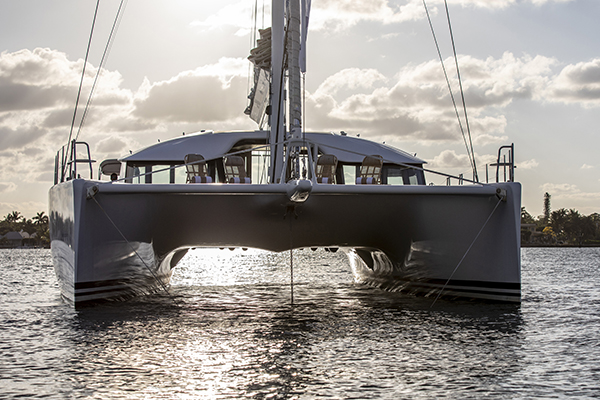
Bridge deck clearance on a cat is one of those dimensions that too often gets overlooked or glossed over as a builder or designer works through the natural compromises that go into a new design. But clearance is critically important: too little and waves will continually slam the bridge deck making life in the saloon and even the ability to sleep in the cabins difficult. The OE60 has more than enough clearance to give the boat and her crew a quiet and comfortable ride in just about all sea states.
The 60 has a fairly traditional, powered-up, performance cat rig with a carbon mast and boom, swept back spreaders, no back stay and a large square-top, fully battened mainsail. The main drops into a pocket-style boom and is controlled with lazy jacks so one person will be able to lower the sail or raise it alone while using the autopilot to keep the boat head-to-wind. Halyards run to the forward cockpit so crew can see the sail clearly when raising and lowering it. The double-ended main sheet and the sheet cars on the traveler can be trimmed form either helm stations.
The headsails are set up so you can control both the jib and the staysail from the cockpit and both are on electric roller furling systems. Both headsails are self-tacking, which makes upwind work simpler. The staysail will be the headsail of choice in breezes over 25 knots or so. The jib and staysail sheets and control lines run aft through line stoppers next to the electric sheet winches. This leaves the decks uncluttered and the tails next to the helms.
The bowsprit is set up to fly downwind sails. You can opt for a Code 0 on its own free-flying furling system, or go with an asymmetrical spinnaker on a top-down furling system.
The EO 60 will be a joy to sail in all conditions and promises to be a fast passage maker. The crew of Like a Breeze saw over 20 knots on the speedo a few times on their passage across the Atlantic. The crew of the OE60 Cygnus Cygnus had 300-plus nautical mile, 24-hour periods, with numerous times over 20 knots and a top speed of 27.4 knots,
Living Aboard
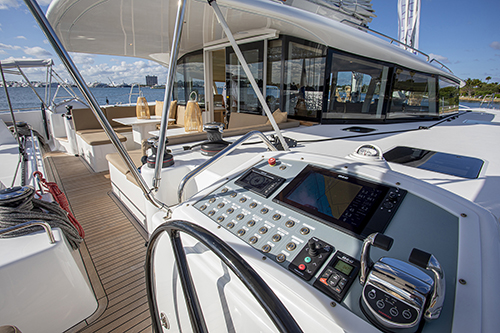
With the twin helms, the actual outside living space is solely for living. There are two identical dinettes to port and starboard that each will sit six people and provide lounging areas for those off watch. The area under the hard top can be secured with an Isinglass enclosure that will make the cockpit warm and dry in bad weather. Crew at the helms or trimming sails will have to don foul weather gear in such conditions.
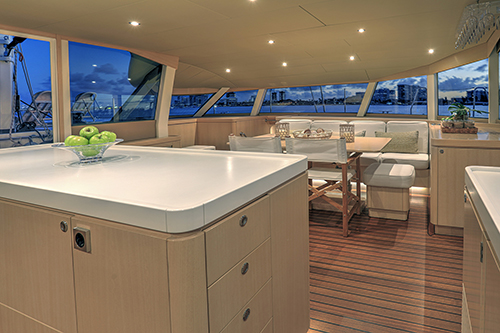
The saloon has an amazing galley to port with a huge L-shaped counter, two drawer-style refrigerators, a four-burner stove and oven and tons of storage space. The galley island down the middle of the saloon has twin sinks, a drying rack for dishes and an under counter waste bucket. Any family will find this galley as good as or better than anything ashore and will make social life aboard at mealtime a communal affair.
The dinette on the starboard side has three comfortable director’s chairs along the inside and bench seats on back sides so you will be able to sit eight comfortably for dinner when eating inside. The views from the dinette table through the saloon windows are unobstructed so you will always know what is going on around the boat. Plus, the bench is long enough for an adult to sleep on when off-watch at sea.
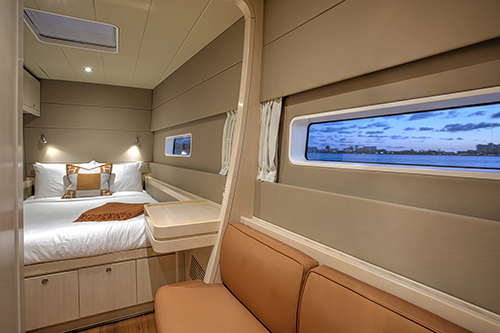
The 60 can be configured in a number of layouts since each one is built to an owner’s specifications. But, OQS offers the basic four-cabin, four-head plan. They also offer a galley-down plan that has the galley aft in the port hull and a crew cabin with upper and low berths tucked into the hull aft of that.
Each of the cabins has plenty of storage and in the owner’s version, with the starboard hulled turned into a master suite, there is ample room for a couple who wants to live aboard for long periods.
The first 60 was finished with teak soles in the cockpit and saloon and a light-colored veneer on all of the furniture. You can see the expert hand of the Riskas Snikeri crew everywhere you turn. The workmanship in the joinery is of the highest yacht style. On pure fit and finish, the OE60 will stand with any custom yacht anywhere.
Devil in the Details
Since OQS was founded by technical professionals who have extensive expertise in their areas of mastery, it is no wonder that the OE60 is something of a technical marvel. The electrical, lighting and plumbing systems are as advanced as you will find on any yacht. The marine electronics, both at the helms and at the excellent nav station in the saloon, can be as expansive as any owner could demand.
OQS state as part of the company’s vision that they want to offer the OE60 and her larger sisters as “green” yachts that have a very small carbon footprint and do not flush untreated black or gray water into the oceans. To that end, they offer a solar array on the cabin top that charges a huge Mastervolt battery bank that in turn can drive a Torqeedo electric power propulsion system, which would be augmented by a diesel generator.
To deal with waste water, they offer a “greenpack” sewage treatment system that employs an Ecomar water processing unit that draws from each head’s holding tanks. Ecomar builds water treatment systems for cruise ships so they know a thing or two about waste water. Designing such a system for a 60-foot catamaran is a leap into the “green” future.
Go Sailing
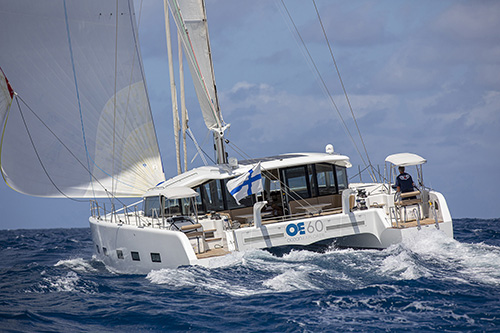
The OE60 falls into a category of luxury, 60-foot plus catamarans that has been active and growing in the last few years with new designs appearing annually from France, Poland, South Africa and China. With the formation of OQS and the launch of the Ocean Explorer line, there is now a player in this luxury market that brings all of the traditions of Finish luxury yacht building to the center of the world cruising cat stage.
For a couple or a family, the OE60 will make a fine and stylish floating home and a very fine, performance cruiser that can safely and comfortably take them anywhere in the world.
